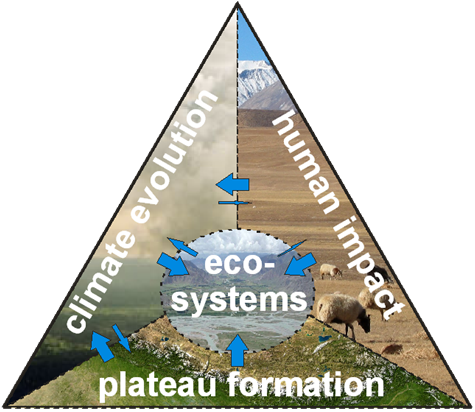| He, S; Richards, K: The role of dew in the monsoon season assessed via stable isotopes in an alpine meadow in Northern Tibet, Atmospheric Research (2014), doi:10.1016/j.atmosres.2014.02.014 | |
| Abstract: Rain in the summer monsoon season is the main water input for the water cycle in the alpine meadow ecosystem of Northern Tibet, however, dew has been observed frequently in Nagqu, especially during consecutive dry days. Under climate change and human disturbance, degradation of the meadow leads to surface property changes and these may affect dew formation. The amount of dew formed on top of the vegetation surface was therefore measured on normal Kobresia pygmaea meadow and partly-degraded crusted meadow soil for 12 dew days in the 40 observation days from early-July to mid-August in 2011. The converted average daily dew depth was significantly higher on the normal meadow and the average of 0.15 mm/night was three times that on the degraded surface between 20:00 and 7:00. To qualitatively identify the role of dew in the local water cycle, water samples from atmospheric water vapour, rain, creek water and groundwater were collected in July and August of 2011 for the analysis of stable water isotopes using the isotope ratio infrared spectroscopy method (IRIS); the vapour samples were collected by cryogenic trapping. It is shown in a δD-δ18O space that dew contains water that has been terrestrially recycled by evapotranspiration. This research takes an initial step to see the impact of meadow degradation on dew formation, with regard to its formative conditions and moisture source, suggesting that dew may be an active water source for meadow growth and hydrological processes during summer dry spells on the high plateau. |

